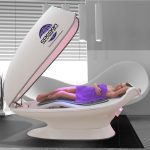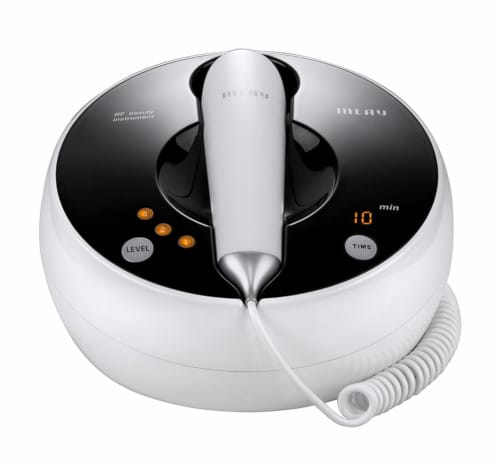Last Updated on 6 months by Francis
Are you considering incorporating infrared saunas into your wellness routine? In this article, we will explore the benefits and advantages of infrared saunas to help you make an informed decision.
Infrared saunas have gained popularity in recent years due to their unique heating method. Unlike traditional saunas that heat the air, infrared saunas use infrared light to directly heat your body, offering a more comfortable experience.
But are infrared saunas really better? Let’s delve into the details and discover the advantages they offer. From improved cardiovascular health to pain relief and relaxation, infrared saunas may have a lot to offer for your overall well-being.
Contents
Key Takeaways:
- Explore the benefits of infrared saunas for your overall well-being.
- Discover how infrared saunas differ from traditional saunas.
- Learn about the potential advantages of infrared sauna therapy.
- Understand the importance of safety precautions when using saunas.
- Consider reputable brands when purchasing an infrared sauna for home use.
The Physiological Benefits of Saunas
Saunas have been used for centuries as a form of therapy, offering a range of physiological benefits for the body. Whether it’s a traditional sauna or an infrared sauna, the effects on our health and well-being are well-documented. Numerous studies have shown that regular sauna use can have a positive impact on pain management, mood enhancement, cardiovascular health, and even longevity.
One of the key physiological benefits of saunas is their ability to promote detoxification. The intense heat in the sauna causes sweating, which helps the body eliminate toxins and impurities through the skin. This process can leave you feeling refreshed and rejuvenated, as well as supporting overall skin health.
Additionally, sauna therapy has been associated with improvements in hormone regulation and brain health. Regular sauna use can help regulate cortisol levels, the stress hormone, leading to reduced stress and improved mental well-being. The heat exposure from saunas also increases blood flow to the brain, promoting cognitive function and potentially reducing the risk of neurodegenerative diseases.
“Sauna therapy has also been shown to aid in chronic pain management, providing relief for conditions such as fibromyalgia and arthritis.”
| Physiological Benefits of Saunas | Traditional Saunas | Infrared Saunas |
|---|---|---|
| Pain Management | X | X |
| Mood Enhancement | X | X |
| Cardiovascular Health | X | X |
| Detoxification | X | X |
| Hormone Regulation | X | X |
| Brain Health | X | X |
| Chronic Pain Management | X | X |
Infrared Saunas vs Traditional Saunas: A Comparison

When it comes to saunas, there are two main types that are commonly used: infrared saunas and traditional saunas. While both offer a range of health benefits, they differ in their heating methods and overall experience. Understanding the differences between the two can help you determine which option is best suited to your needs.
Heating Methods
An infrared sauna uses infrared light to directly heat the body, operating at lower temperatures than traditional saunas. This makes it more comfortable for extended use and allows for a more accessible experience, especially for those who may find the high temperatures of traditional saunas overwhelming. Traditional saunas, on the other hand, heat the air within the sauna chamber, which then warms the body indirectly.
Health Benefits
Both infrared saunas and traditional saunas offer similar health benefits. Regular use of either type of sauna can help improve cardiovascular health, promote relaxation, and aid in pain management. Both have also shown promise in reducing symptoms of chronic conditions such as fibromyalgia and arthritis. While there is limited research specifically comparing the benefits of infrared saunas to traditional saunas, the reported benefits of both types indicate their potential for enhancing overall well-being.
| Benefits | Infrared Saunas | Traditional Saunas |
|---|---|---|
| Direct Heat | Yes | No |
| Lower Temperatures | Yes | No |
| Cardiovascular Health | Yes | Yes |
| Relaxation | Yes | Yes |
| Pain Management | Yes | Yes |
| Chronic Conditions | Yes | Yes |
In conclusion, both infrared saunas and traditional saunas offer significant health benefits, and the choice between the two ultimately depends on personal preferences and considerations. While infrared saunas provide a more comfortable and accessible experience with their direct heat and lower temperatures, traditional saunas offer a tried-and-true method of sauna therapy. Whether you opt for an infrared sauna or a traditional sauna, incorporating sauna sessions into your wellness routine can contribute to improved overall health and well-being.
Exploring the Benefits of Infrared Saunas
Infrared sauna therapy has gained popularity in recent years due to its potential health benefits. This form of heat therapy involves sitting under infrared lights that emit heat directly onto the skin, providing a targeted approach to relaxation and wellness. While more research is needed to fully understand the effectiveness of infrared saunas, early studies have indicated several potential benefits.
Improved Heart Health: Infrared saunas have shown promise in improving cardiovascular health. Research suggests that regular use may help lower blood pressure, improve circulation, and enhance vascular function. These effects can contribute to overall heart health and reduce the risk of cardiovascular diseases.
Pain Relief and Muscle Recovery: Infrared saunas have been reported to provide pain relief and aid in muscle recovery. The heat from the infrared lights can penetrate deep into the muscles, promoting blood flow and relaxation. This can help alleviate muscle soreness, joint pain, and stiffness, making infrared saunas a popular choice among athletes and those with chronic pain conditions.
Relaxation and Stress Reduction: Spending time in an infrared sauna can promote relaxation and help reduce stress levels. The soothing warmth and gentle heat can help calm the mind and body, leading to feelings of relaxation and tranquility. Many sauna users find this experience to be a valuable component of their self-care routine.
| Benefit | Description |
|---|---|
| Improved Heart Health | Infrared saunas have shown promise in improving cardiovascular health by lowering blood pressure, improving circulation, and enhancing vascular function. |
| Pain Relief and Muscle Recovery | Infrared saunas can provide relief from muscle soreness, joint pain, and stiffness. The heat penetrates deep into the muscles, promoting blood flow and relaxation. |
| Relaxation and Stress Reduction | The warmth and gentle heat of infrared saunas can help calm the mind and body, leading to feelings of relaxation and reduced stress levels. |
Infrared saunas offer a range of potential health benefits, but it is important to note that individual experiences may vary. It is advisable to consult with a healthcare professional before incorporating infrared sauna therapy into your wellness routine, particularly if you have any underlying medical conditions. By doing so, you can ensure a safe and effective sauna experience tailored to your specific needs.
Understanding Sauna Basics
In this section, we will explore the fundamental aspects of sauna sessions, including the duration, physiological responses, and accessibility. Understanding the basics of sauna therapy will enable you to make the most out of your experience and maximize the potential benefits for your overall well-being.
Duration of Sauna Sessions
Sauna sessions typically last from 5 to 30 minutes, depending on individual preferences and tolerance levels. It is important to start with shorter sessions if you are new to saunas and gradually increase the duration as your body adapts to the heat. Remember to listen to your body and exit the sauna if you feel uncomfortable or lightheaded.
Physiological Responses to Sauna Heat
While in the sauna, you will experience sweating, increased heart rate, and a sense of relaxation. These responses are the body’s natural reactions to heat stress and play a crucial role in the potential health benefits of sauna therapy. Sweating helps detoxify the body by eliminating toxins through the skin, while the increased heart rate improves cardiovascular function.
Furthermore, the relaxation induced by the sauna can help reduce stress and promote a sense of well-being. It is important to note that individual responses may vary, and some people may find saunas more invigorating than relaxing.
Accessibility and Sauna Methods
Saunas can be accessed at gyms, spas, and health centers, where you can enjoy the facilities provided. Alternatively, you have the option of investing in an infrared sauna for personal use at home. Infrared saunas are becoming increasingly popular due to their lower temperatures and ease of use. They can be installed in your home and allow you to enjoy the benefits of sauna therapy at your convenience.
When utilizing a sauna, you can also experiment with different methods to enhance your experience. Some individuals prefer alternating between heat exposure in the sauna and cold exposure, such as taking a cold shower or plunge in a cold pool. This contrast may further stimulate blood circulation and provide additional benefits to the body.
Sauna Basics
To summarize, sauna sessions typically last from 5 to 30 minutes, and the body’s physiological responses include sweating, increased heart rate, and relaxation. Saunas are accessible at various locations, and home-use infrared saunas offer the convenience of enjoying sauna therapy at any time. Exploring different methods, such as alternating between heat and cold exposure, can enhance your sauna experience.
| Aspect | Summary |
|---|---|
| Duration of Sauna Sessions | Sessions typically last from 5 to 30 minutes, starting with shorter durations for beginners. |
| Physiological Responses | Sauna heat induces sweating, increased heart rate, and relaxation, fostering detoxification and cardiovascular benefits. |
| Accessibility and Methods | Saunas are accessible at gyms, spas, and health centers. Home-use infrared saunas offer convenience. Alternating heat and cold exposure can enhance the experience. |
Risks and Safety Tips for Sauna Use

While saunas offer numerous health benefits, it is essential to understand the potential risks and take necessary precautions to ensure a safe and enjoyable experience. Whether you are using a traditional sauna or an infrared sauna, here are some important considerations:
- Dehydration: Sauna sessions can cause excessive sweating, leading to dehydration. It is vital to drink plenty of water before, during, and after your sauna session to stay hydrated and replenish lost fluids.
- Overheating: Prolonged exposure to high temperatures can result in overheating. It is recommended to limit your sauna sessions to under 30 minutes and listen to your body’s signals. If you start feeling dizzy, nauseous, or unwell, exit the sauna immediately and cool down.
- Individual Health Conditions: People with certain medical conditions, such as multiple sclerosis or pregnancy, should avoid sauna use to prevent any potential risks. It is always best to consult with a healthcare provider before starting a sauna routine, especially if you have underlying health concerns.
- Adverse Reactions: Some individuals may experience adverse reactions to sauna use, such as skin irritation, respiratory issues, or exacerbation of certain health conditions. If you have any concerns or notice any unusual symptoms, discontinue sauna use and seek medical advice.
By following these safety tips and listening to your body, you can enjoy the many benefits of sauna therapy while minimizing any potential risks.
Recommended Products for Infrared Sauna Use

If you’re considering incorporating infrared sauna therapy into your wellness routine, there are several recommended products available on the market. It’s important to choose from reputable brands that offer high-quality infrared saunas to ensure a safe and effective experience. When selecting an infrared sauna for home use, consider factors such as size, heat range, safety features, and customer reviews to make an informed decision.
Here are some of the best infrared sauna brands to consider:
- 1. Sunlighten: Known for their innovative technology and high-quality construction, Sunlighten offers a range of infrared saunas suitable for home use.
- 2. JNH Lifestyles: JNH Lifestyles is known for their affordable yet reliable infrared saunas, making them a popular choice among homeowners.
- 3. Radiant Health Saunas: With a focus on optimal performance and energy efficiency, Radiant Health Saunas offers a wide selection of infrared saunas suitable for various budgets.
- 4. Clearlight Saunas: Clearlight Saunas are known for their low EMF (electromagnetic field) emissions and comfortable design, ensuring a safe and enjoyable sauna experience.
- 5. Dynamic Saunas: Dynamic Saunas offers a range of affordable infrared saunas that are perfect for individuals looking to incorporate sauna therapy into their wellness routine without breaking the bank.
Remember to research each brand thoroughly, consider your specific needs and budget, and read customer reviews before making a purchase. Investing in a high-quality infrared sauna can provide you with the best benefits and long-term enjoyment.
Table: Comparison of Recommended Infrared Sauna Brands
| Brand | Key Features | Price Range | Customer Rating |
|---|---|---|---|
| Sunlighten | Advanced technology, high-quality construction | $2,500 – $10,000 | 4.5/5 |
| JNH Lifestyles | Affordable, reliable, easy to assemble | $1,000 – $3,000 | 4/5 |
| Radiant Health Saunas | Optimal performance, energy-efficient | $3,000 – $8,000 | 4/5 |
| Clearlight Saunas | Low EMF emissions, comfortable design | $3,000 – $12,000 | 4.5/5 |
| Dynamic Saunas | Affordable, suitable for small spaces | $1,000 – $2,500 | 4/5 |
Exploring the Effectiveness of Infrared Saunas
When it comes to the effectiveness of infrared saunas, there is ongoing research that suggests a range of potential health benefits. While more studies are needed to fully understand the long-term impact, early findings show promising outcomes in various areas of wellness.
Research on infrared saunas has indicated positive effects on cardiovascular health, with studies suggesting that regular use may help improve blood circulation and lower blood pressure. Additionally, infrared saunas have been found to aid in relaxation and stress reduction, promoting a sense of calm and well-being.
Furthermore, preliminary research suggests that infrared sauna therapy may play a role in pain management, particularly for individuals with conditions such as fibromyalgia and arthritis. It has been reported that infrared heat can help alleviate muscle soreness, joint pain, and stiffness, potentially improving overall comfort and quality of life.
| Benefits of Infrared Saunas | Research Evidence |
|---|---|
| Cardiovascular health | Preliminary studies indicate potential benefits, including improved blood circulation and reduced blood pressure. |
| Relaxation and stress reduction | Early findings suggest that infrared saunas can promote relaxation, reduce stress, and enhance overall well-being. |
| Pain management | Emerging research indicates that infrared sauna therapy may help alleviate muscle soreness, joint pain, and stiffness. |
While these initial studies are encouraging, it’s important to note that more comprehensive research is necessary to establish the full potential and effectiveness of infrared saunas. Additionally, individual experiences may vary, and it is always advisable to consult with a healthcare professional before incorporating sauna therapy into your wellness routine.
Taking a Closer Look at Infrared Sauna Therapy
Infrared sauna therapy, also known as heat therapy, involves sitting under infrared lights that emit heat directly onto the skin. This targeted approach to heat therapy offers numerous potential benefits for overall health and well-being. Infrared saunas are designed to operate at lower temperatures compared to traditional saunas, which makes them more comfortable and accessible for a wider range of individuals, including those who may find high heat levels in traditional saunas challenging.
Early research on infrared sauna therapy has shown promising outcomes in areas such as cardiovascular health, pain management, and relaxation. For example, a study published in the Journal of Clinical Rheumatology found that infrared sauna therapy helped to significantly alleviate pain and improve physical functioning in people with chronic pain conditions like fibromyalgia and arthritis. Another study published in Circulation demonstrated that regular infrared sauna use yielded positive effects on blood pressure and vascular function in individuals with high blood pressure.
Conclusion
In conclusion, when it comes to the question of whether infrared saunas are better than traditional saunas, the answer is not cut and dry. Both types of saunas offer similar health benefits, such as improved cardiovascular health, pain management, and relaxation.
However, infrared saunas have certain advantages that make them stand out. They operate at lower temperatures, making them more comfortable for prolonged use, and they are accessible for home use, allowing individuals to incorporate sauna therapy into their daily routines.
While the reported benefits of infrared saunas are encouraging, it is important to note that more research is needed to fully understand their effectiveness and long-term impact. It is always advisable to consult with a healthcare professional before incorporating saunas into your wellness routine, as individual needs and considerations may vary.
FAQ
Are infrared saunas better than traditional saunas?
Both types of saunas offer similar health benefits, but infrared saunas have lower temperatures and are more comfortable for home use.
What are the physiological benefits of sauna therapy?
Sauna therapy can lead to improved cardiovascular function, enhanced stress tolerance, and cellular repair.
How do infrared saunas compare to traditional saunas?
Infrared saunas differ in their heating methods, using infrared light to directly heat the body. Both types offer similar advantages for heart health, brain function, and pain management.
What are the benefits of using infrared saunas?
Infrared saunas have been shown to improve heart health, increase blood circulation, speed up muscle recovery, provide pain relief, promote relaxation, aid in better sleep, and potentially reduce the risk of neurodegenerative diseases.
How long do sauna sessions typically last?
Sauna sessions can last from 5 to 30 minutes, and they often involve alternating between heat exposure and cold exposure.
What precautions should be taken when using saunas?
To ensure safety, it is important to stay hydrated, limit sauna sessions to under 30 minutes, and be aware of any potential adverse reactions. People with certain conditions should avoid sauna use.
Where can I access saunas?
Saunas can be accessed at gyms, spas, and health centers, or you can invest in an infrared sauna for personal use at home.
How effective are infrared saunas?
While more research is needed, early studies have indicated positive outcomes in areas such as cardiovascular health, pain management, and relaxation.
What is infrared sauna therapy?
Infrared sauna therapy involves sitting under infrared lights that emit heat directly on the skin, providing a targeted approach to heat therapy.
Is it recommended to consult with a healthcare professional before starting a sauna routine?
Yes, it is always advisable to consult with a healthcare professional, especially if you have underlying medical conditions.









